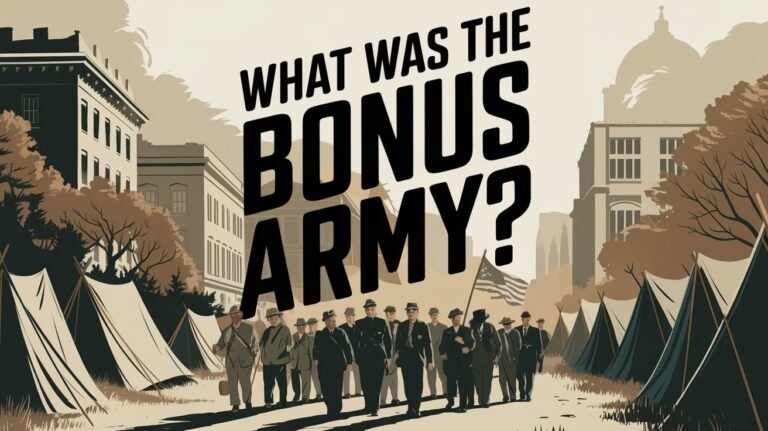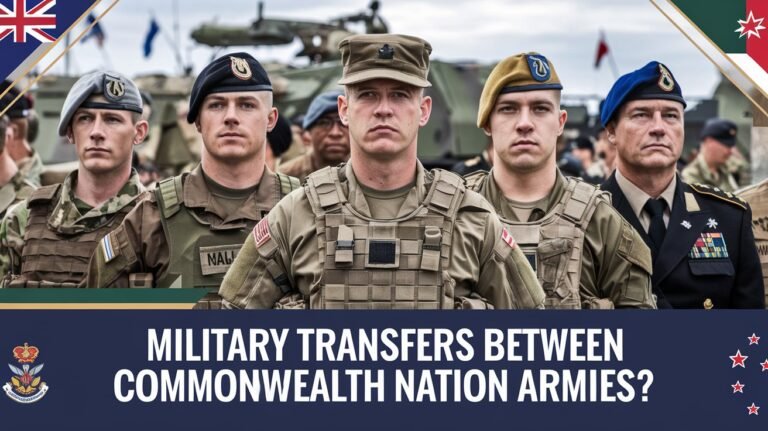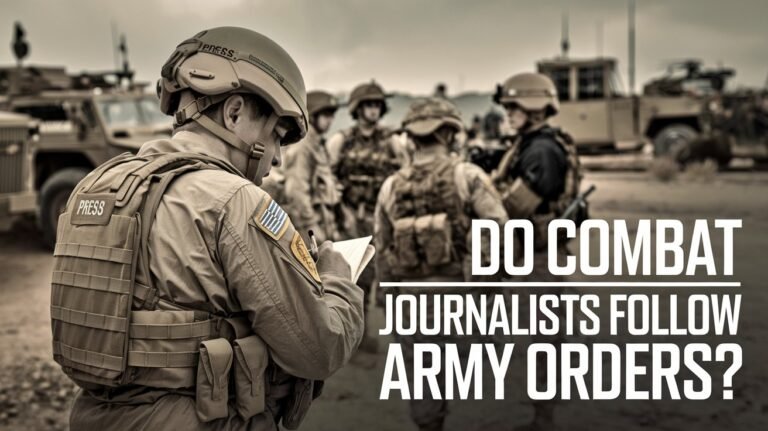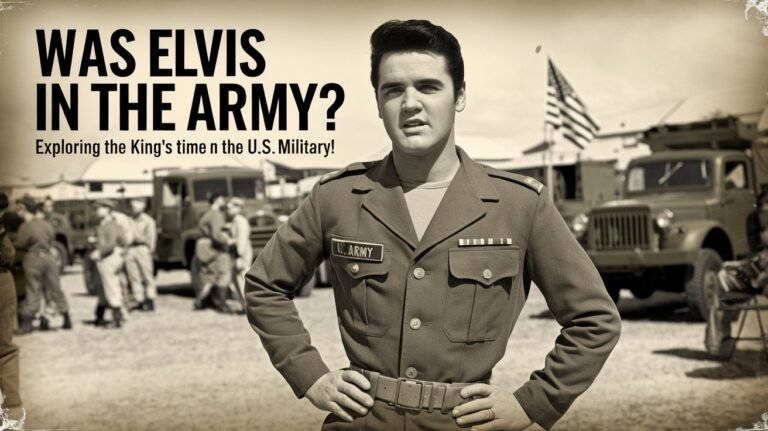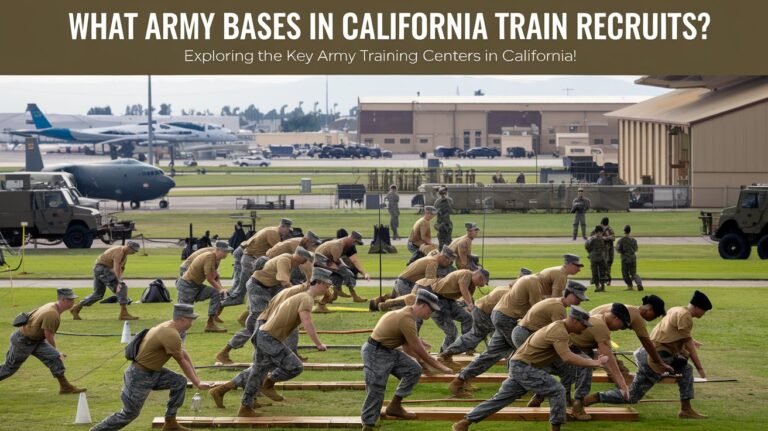Which Is Higher Lieutenant Or Sergeant In Us Army?
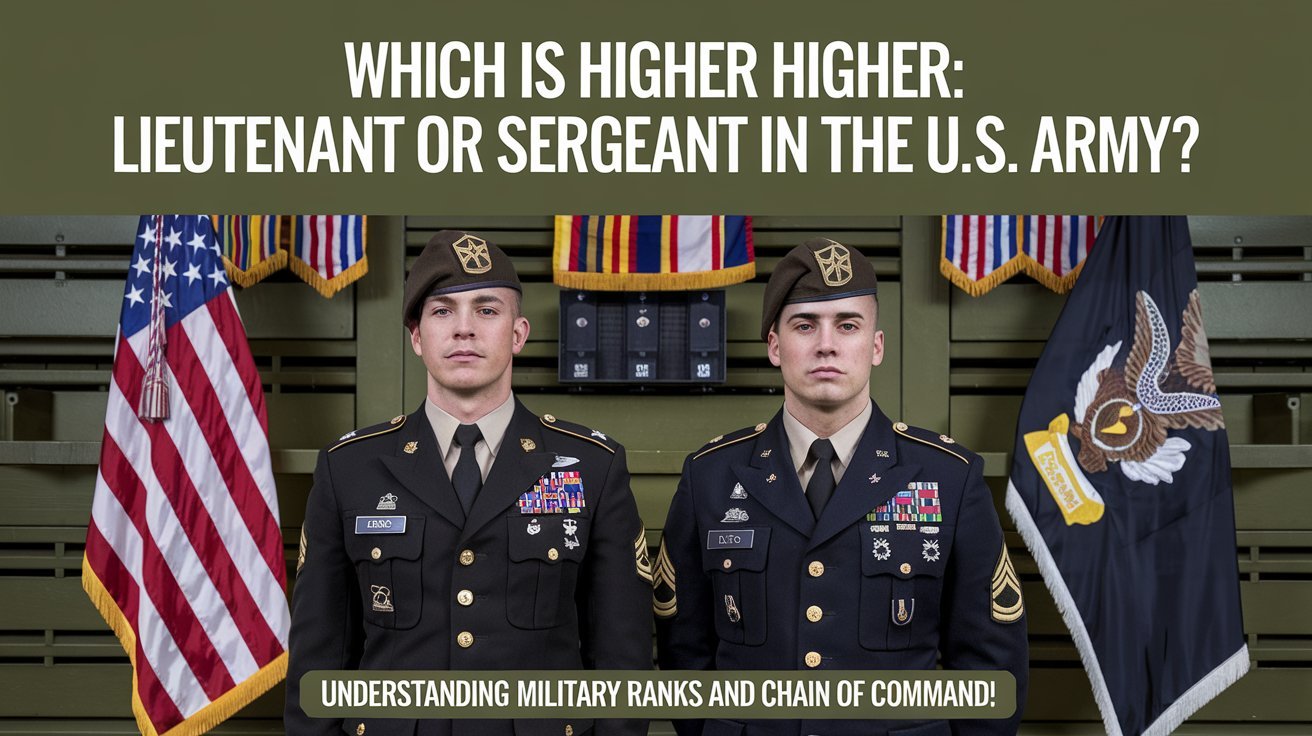
The United States Army has a clear rank system. It separates officers from enlisted personnel. A Lieutenant, being an officer, usually ranks higher than a Sergeant, who is a non-commissioned officer.
This system shows the difference in leadership and decision-making power. As you move up in rank, officers take on more responsibility.
To grasp the Lieutenant and Sergeant’s roles, we need to look at the Army’s rank system. We’ll explore the hierarchy and the duties of officers and enlisted soldiers. This article will explain the Army’s rank structure, focusing on Lieutenants and Sergeants’ roles and authority.
US Army Rank Structure Fundamentals
The United States Army has a detailed rank structure. It outlines the roles, duties, and authority levels of its members. The structure includes enlisted, warrant officer, and commissioned officer ranks, each with unique responsibilities and positions.
Military Leadership Hierarchy
At the base are the enlisted soldiers, the Army’s backbone. They start as Privates (E-1) and can reach Sergeant Major of the Army (E-9). Sergeants and Staff Sergeants, as Non-Commissioned Officers (NCOs), lead and train these soldiers.
Warrant Officers, from Warrant Officer 1 (W-1) up, offer specialized skills and lead in combat. Commissioned Officers manage, solve problems, and plan. They begin as Second Lieutenants (O-1) and can become General Officers (O-7 to O-10), overseeing big operations.
Pay Grade Classifications
The Army’s rank structure also uses pay grades. These are marked as E (enlisted), W (warrant), and O (commissioned) followed by a number. These grades help standardize pay and benefits, even though they don’t always match rank titles.
Command Structure Basics
The Army’s command structure is clear and hierarchical. Junior Officers lead platoons or companies. Field Grade Officers manage bigger units, with Colonels heading brigades. General Officers oversee big operations and shape Army policy.
The US Army’s rank and command structure ensure smooth military operations. Each member plays a vital role in the mission.
Which is Higher Lieutenant or Sergeant in US Army
In the US Army, a lieutenant ranks higher than a sergeant. Lieutenants lead platoons of 16-44 soldiers. Sergeants, on the other hand, lead teams of 4 soldiers or squads of 8-16 soldiers. Even though sergeants have big leadership roles, lieutenants have more authority.
Lieutenants are commissioned officers, which means they’ve had a lot of training. They are given formal authority by the government. Sergeants, being non-commissioned officers, have risen through the ranks based on their experience and skills.
Both lieutenants and sergeants are important in leading soldiers. But, the lieutenant’s position in the military hierarchy makes them superior. This is also shown in their pay grades. Lieutenants are in the O-1 pay grade, while sergeants are in the E-5 pay grade.
| Rank | Pay Grade | Command Responsibility |
|---|---|---|
| Lieutenant | O-1 | Platoon (16-44 soldiers) |
| Sergeant | E-5 | Team (4 soldiers) or Squad (8-16 soldiers) |
The duties and responsibilities of lieutenants and sergeants can differ in the US military. But, the rule that lieutenants are higher in rank and authority than sergeants is the same across all branches.
Officer Ranks and Their Responsibilities
In the US Army, commissioned officers are crucial leaders and decision-makers. They play a key role in operations and lead enlisted personnel. The officer ranks grow, each with more responsibility and power.
Lieutenant’s Role in Military Operations
Lieutenants lead small groups, like a platoon, with a platoon sergeant and squads. They plan missions, give orders, and assign tasks to their soldiers.
Command Authority of Officers
Commissioned officers can command enlisted personnel. Captains lead units of 62 to 190 soldiers. Majors are key staff officers for brigades and task forces.
Officer Career Progression
The officer career path goes from Second Lieutenant to General. As officers move up, they lead bigger units and handle more complex tasks.
Enlisted Ranks and Their Functions
The backbone of the United States Army is its enlisted soldiers. They make up the majority of the force. These dedicated individuals perform a wide range of specialized job functions within military units.
Enlisted ranks in the Army range from the entry-level Private (PVT) to the esteemed Sergeant Major of the Army (SMA), the highest enlisted rank. Between these two extremes, enlisted soldiers hold various positions. These include Specialists, Corporals, and Sergeants, each with their own unique responsibilities and authority levels.
Noncommissioned officers (NCOs), starting from the rank of Sergeant, serve as the primary trainers and leaders for enlisted personnel. These experienced soldiers are responsible for instilling discipline and imparting technical expertise. They guide their subordinates in the execution of their duties. NCOs play a vital role in bridging the gap between officers and enlisted soldiers, ensuring the smooth operation of military units.
Enlisted soldiers in the Army specialize in a wide range of military occupational specialties (MOS). These include infantry, artillery, logistics, and information technology. These specialized skill sets are essential for the Army to effectively carry out its diverse operations. This includes combat missions, humanitarian aid, and disaster relief efforts.
| Enlisted Rank | Pay Grade | Role and Responsibilities |
|---|---|---|
| Private (PVT) | E-1 | Entry-level enlisted soldier, undergoing basic training and learning the fundamentals of military service. |
| Private First Class (PFC) | E-3 | Experienced soldier, proficient in basic military skills and often assigned to specialized roles within a unit. |
| Sergeant (SGT) | E-5 | Noncommissioned officer, responsible for leading a squad or section and training junior enlisted soldiers. |
| Sergeant Major (SGM) | E-9 | The highest enlisted rank, serving as a senior advisor to the commanding officer and overseeing the training and discipline of the entire unit. |
Sergeant Positions and Authority Levels
Noncommissioned officers (NCOs) are key in the United States Army. They are the backbone of military leadership. The Sergeant rank is crucial, with different positions having different levels of authority and responsibility.
Types of Sergeant Ranks
The US Army has several sergeant ranks:
- Sergeant
- Staff Sergeant
- Sergeant First Class
- Master Sergeant
- First Sergeant
- Sergeant Major
- Command Sergeant Major
Each rank has its own duties and leadership roles. This hierarchy is essential for the Army’s command structure.
Sergeant Leadership Duties
Sergeants are called the “backbone of the Army.” They lead and oversee soldiers. Their tasks include training, discipline, and looking after their team’s well-being.
Sergeants connect enlisted personnel with officers. They are a key link in the chain of command.
| Rank | Responsibilities | Typical Command |
|---|---|---|
| Sergeant | Training, discipline, and welfare of soldiers | Team/section or squad |
| Staff Sergeant | Mentoring and supervising junior NCOs, supporting company-level operations | Squad or platoon |
| Sergeant First Class | Advising and assisting officers, overseeing platoon-level training and operations | Platoon |
| Master Sergeant | Serving as senior enlisted advisor, managing battalion-level programs and policies | Battalion or company |
| First Sergeant | Supervising company-level NCOs, serving as the commander’s top enlisted advisor | Company |
| Sergeant Major | Advising and assisting the command sergeant major, providing senior enlisted leadership | Battalion or brigade |
| Command Sergeant Major | Serving as the senior enlisted advisor to the commander, overseeing the training and discipline of all enlisted personnel | Brigade or division |
Military Unit Command Structure
The U.S. Army has a clear command structure, from small teams to large divisions. Teams have 4 soldiers and a sergeant leader. Squads, with 8-16 soldiers, are led by a staff sergeant.
Platoons, with 16-44 soldiers, are under a lieutenant. Companies, with 60-200 soldiers, have captains as leaders. Battalions, with 300-1,000 soldiers, are led by lieutenant colonels.
Brigades, with 1,500-3,200 soldiers, are commanded by colonels. Divisions, the largest units, have 10,000-16,000 soldiers. They are led by major generals. This detailed army units and command hierarchy in the military organization ensures smooth coordination and control.
| Unit | Number of Soldiers | Command |
|---|---|---|
| Team | 4 | Sergeant |
| Squad | 8-16 | Staff Sergeant |
| Platoon | 16-44 | Lieutenant |
| Company | 60-200 | Captain |
| Battalion | 300-1,000 | Lieutenant Colonel |
| Brigade | 1,500-3,200 | Colonel |
| Division | 10,000-16,000 | Major General |
Chain of Command Between Officers and NCOs
The military chain of command is key in the United States Army. It sets clear authority and responsibility lines. Officers make big decisions, while Noncommissioned Officers (NCOs) lead directly and carry out these decisions.
Direct Leadership Roles
Lieutenants, being junior officers, team up with platoon sergeants to get missions done right. Captains, as company commanders, count on their first sergeants to manage the unit well. This teamwork is vital, blending officers’ strategic views with NCOs’ hands-on leadership.
Operational Authority
In the leadership structure, NCOs have a lot of operational authority. They train and guide junior soldiers and make key decisions during operations. This officer-NCO relationship is key to the military chain of command, making sure the Army’s mission is done well.
| Publication | Pages |
|---|---|
| The Chiefs of Staff, United States Army: On Leadership and The Profession of Arms (2000) | 120 |
| The Sergeants Major of the Army: On Leadership and The Profession of Arms (1996, 1998) | 46 |
| The Officer/NCO Relationship: Words of Wisdom and Tips for Success (1997) | 1st edition 50 pages; 2nd edition 48 pages |
| The Noncommissioned Officer Corps on Leadership, the Army, and America; and The Noncommissioned Officer Corps on Training, Cohesion, and Combat (1998) | Two books with 72 and 77 pages respectively |
| Command, Leadership, and Effective Staff Support: A Handbook Including Practical Ways for the Staff to Increase Support to Battalion and Company Commanders (1995, 1996) | 224 |
| The US Army Noncommissioned Officer Corps: A Selected Bibliography (1998) | 34 |
Differences in Training and Qualifications
In the United States Army, officers and non-commissioned officers (NCOs) have different training paths. Officers, who lead as commissioned leaders, go through a more detailed education. NCOs, on the other hand, learn through practical experience in the enlisted ranks.
Officer training often includes a four-year stay at a military academy, like the U.S. Military Academy at West Point. Some officers join the Army Reserve Officers’ Training Corps (ROTC) program. These programs teach leadership, tactics, and military science. Some officers also attend Officer Candidate School (OCS), a 12-week course that prepares them for their roles.
NCOs, on the other hand, climb the ranks through experience and training. They take courses like the Basic Leader Course and Advanced Leader Course. These courses improve their management, decision-making, and tactical skills. This training helps NCOs lead and mentor well.
Both officers and NCOs keep learning throughout their careers. But, they focus on different things. Officers work on strategic planning and advanced leadership. NCOs focus on technical skills and leading on the front lines.
Bottom Line
The US Army rank structure is clear. It separates commissioned officers, like lieutenants, from noncommissioned officers, like sergeants. Officers, such as lieutenants, rank higher than sergeants. Yet, both are key to the Army’s success.
Officers lead with strategy and make big decisions. Noncommissioned officers (NCOs), like sergeants, lead directly and bring technical skills. They are vital for the Army’s success.
Knowing the us army ranks and military hierarchy is key. Sergeants, as experienced NCOs, connect lower ranks with higher officers. They show leadership, accountability, and mentorship. Their role is based on their experience and the trust from the military.
The difference between officer and enlisted ranks is crucial. It shapes the us army ranks and the military structure. Understanding and respecting these roles helps build a strong, effective Army. This is essential for achieving mission goals.
Common Queries
What is the difference between a lieutenant and a sergeant in the US Army?
In the US Army, a lieutenant is higher than a sergeant. Lieutenants lead platoons of 16-44 soldiers. Sergeants lead teams of 4 soldiers or squads of 8-16 soldiers. Lieutenants have more authority and command than sergeants.
What are the different ranks in the US Army?
The US Army has enlisted, warrant officer, and commissioned officer ranks. Enlisted soldiers do specific jobs. Warrant officers are experts and leaders. Commissioned officers manage and lead, solving problems and planning.
What is the difference between rank and pay grade in the US Army?
Rank shows leadership and authority. Pay grades are for standardizing pay. Pay grades are marked by E, W, and O followed by a number. They don’t always match rank.
What are the different types of officer and enlisted ranks in the US Army?
Officer ranks include lieutenant, captain, and generals. Enlisted ranks go from private to sergeant major. Noncommissioned officers start as sergeants, leading and training.
What are the responsibilities of officers and NCOs in the US Army?
Officers make big decisions and lead strategically. NCOs lead directly and have technical skills. Lieutenants work with sergeants, and captains rely on first sergeants. This teamwork ensures success.
How does the US Army’s unit command structure work?
The Army’s structure goes from small teams to big divisions. Teams have 4 soldiers, squads 8-16, and platoons 16-44. Officers make decisions, and NCOs lead and carry out those decisions.
What are the differences in training and qualifications between officers and NCOs in the US Army?
Officers go to military academies or ROTC. NCOs climb the ranks, getting practical experience. Both keep learning, but focus on their roles.

